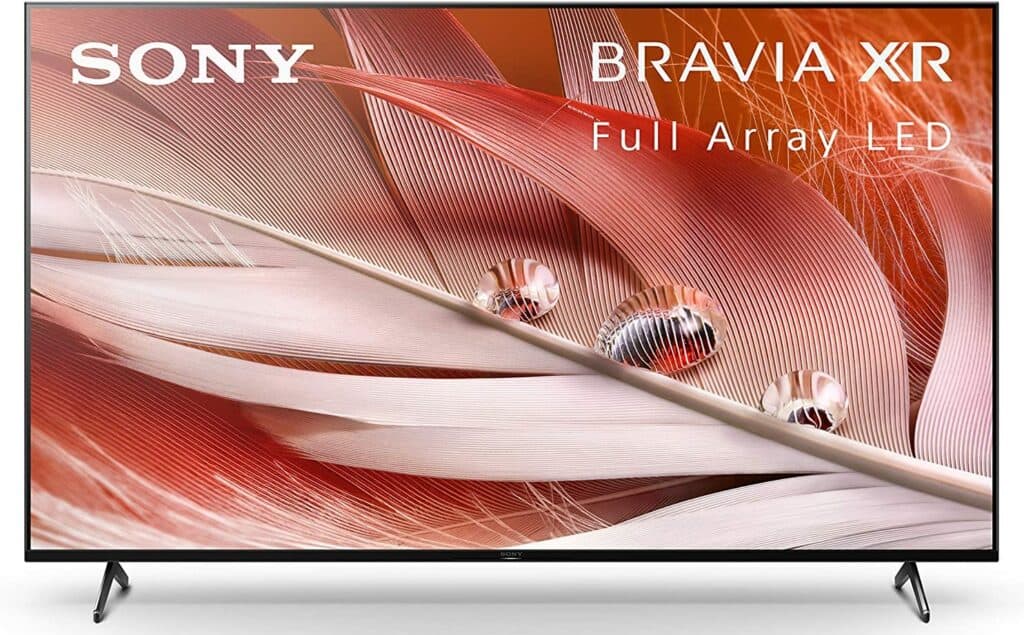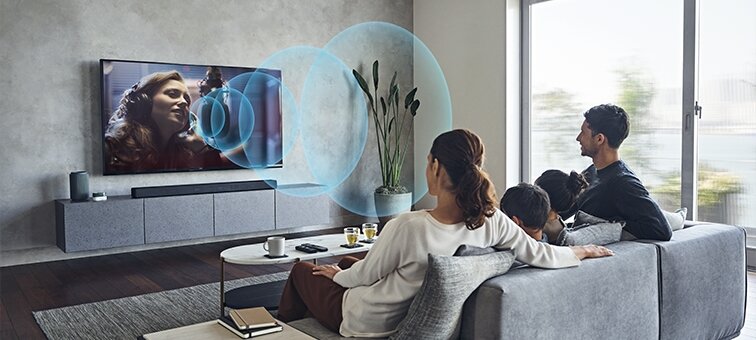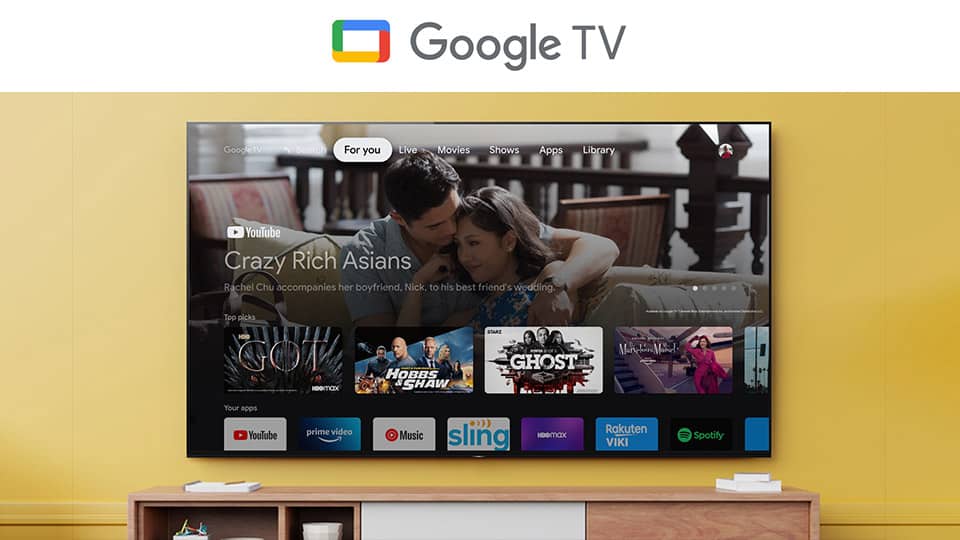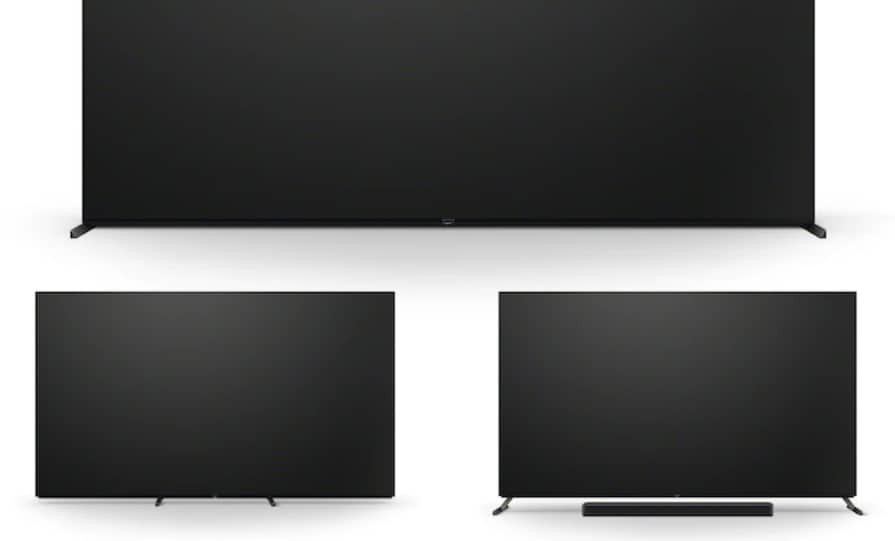Looking for a new high-resolution TV? Too many choices making your decision confusing? Buying a new TV should not be an unpleasant experience. We can help you easily choose a new TV. This article compares two great Sony 4K TVs — X90J vs X95J.
Sony Bravia X90J vs sony bravia x95J at a glance
Sony is one of the world’s largest TV manufacturers. They don’t have many budget-friendly models since they offer primarily mid-range and high-end TV models.
When buying a new TV, you need to be informed about the most important features. The X90J and X95J both support 4K resolution, have great picture quality, support VRR and have a 120 Hz refresh rate.
However, even though they are similar, they have some differences.
Before we dive further into a more detailed comparison, let’s compare their main features in the table below.
| Features | X90J | X95J |
|---|---|---|
| Screen Sizes (inches) | 50, 55, 65, and 75 inches | 65, 75, and 85 inches |
| Screen Panel | VA | VA |
| Processor | Cognitive Processor XR | Cognitive Processor XR |
| Operating System | Google TV 10 | Google TV 10 |
| Refresh Rate | 120 Hz | 120 Hz |
| Variable Refresh Rate | Yes | Yes |
| Resolution | 4K | 4K |
| Contrast Ratio | 5,600: 1 | 2,853: 1 |
| HDMI Ports | 4 | 4 |
| USB Ports | 2 | 3 |
| Wi-Fi and Bluetooth | Yes | Yes |
| Speakers | 20 Watts (2.0 Channels) | 50 Watts (2.1 Channels) |
| Price | Check Price on Amazon | Check Price on Amazon |
Sony X90J

Pros:
- Great native contrast ratio
- 120 Hz refresh rate
- 2.1 HDMI ports
- Response time
Cons:
- Poor viewing angles
- Weak bass
Sony X95J

Pros:
- Fantastic local dimming feature
- Superb HDR brightness
- Good viewing angles
- Great reflection handling
Cons:
- Contains ads
- Native contrast ratio
Features Face to Face
Panel Technology
Both TVs in our comparison come with a VA (Vertical Alignment) panel. If you don’t like VA panels, you can also opt for a TV with other types of panels.
VA panels have a very good contrast ratio, making them a great choice for watching movies in dark rooms. But their response time is not that great when compared to other panels.
VA panels are also known for their poor viewing angles. So, if you plan to watch TV with family and friends or you have a wide seating area, a VA panel might not be the best choice.
Winner: Draw
Image Processor
The X90J and the X95J come with the same image processor — Cognitive Processor XR. It provides vibrant colors and improves the contrast ratio.

The XR 4K Upscaling feature upscales 2K resolution up to near-4K resolution. So, even lower-resolution content is upscaled for life-like picture quality.

The XR Super Resolution detects each object and improves the quality to provide better details and texture of objects.
Winner: Draw
Motion Technology
The refresh rate is one of the most important indicators for good motion handling. It shows how many times a TV can refresh in one second. 60 Hz is more than enough if you want to watch movies or TV shows. But if you want to play video games, the better choice is 120 Hz, especially in combination with a variable refresh rate.
| Performance features | X90J | X95J |
|---|---|---|
| Refresh rate | 120 Hz | 120 Hz |
| Variable refresh rate | Yes | Yes |
| Response time | 10.7 ms | 11.7 ms |
| Input lag 1080p at 120 Hz | 10.0 ms | 9.8 ms |
| Input lag 4K at 120 Hz | 11.1 ms | 9.6 ms |
| Input lag 1440p at 60Hz | 18.1 ms | 17.7 ms |
The X90J and X95J have similar performance when it comes to input lag. The X90J has a better response time, so it is a slightly better choice for gaming. But, overall, VA panels are not the best choice for gaming. If you want a gaming TV, check out the Samsung QN90A.
Winner: X90J
Picture Quality
In addition to refresh rates, you also need to pay attention to supported resolutions. Today, most comparisons come down to two resolutions – 4K or 8K. But there are also TVs with 1080p or even 720p resolution.
Right now, the most common resolution is 4K. TVs in our comparison both support 4K resolution at 120 Hz.
| Resolution | X90J | X95J |
|---|---|---|
| 8K | No | No |
| 4K/144Hz | No | No |
| 4K/120Hz/4:4:4 | Yes | Yes |
| 4K/120Hz | Yes | Yes |
| 4K/60Hz/4:4:4 | Yes | Yes |
| 4K/60Hz | Yes | Yes |
| 1440p/144Hz | No | No |
| 1440p/120Hz | No | No |
| 1440p/60Hz | Yes (forced resolution required) | Yes (forced resolution required) |
| 1080p/144Hz | No | No |
| 1080p/120Hz | Yes | Yes |
| 1080p/60Hz/4:4:4 | Yes | Yes |
| Price | Check Price on Amazon | Check Price on Amazon |
Contrast Ratio / Black Level
The contrast ratio is the ratio between the brightest white and the darkest black. Good or bad contrast ratio is most visible when watching dark scenes, especially in dark rooms.
The X90J model has better native contrast. It has a native contrast ratio of 5,600:1, whereas the X95J model has a contrast ratio of 2,853:1.
Winner: X90J
Local Dimming
On TV models that support local dimming, the native contrast ratio can be enhanced. Luckily, both TVs in our Sony X90J vs X95J comparison support this feature.
LED TVs can have different backlighting, such as full-array or edge-lit backlighting. These two models have full-array backlighting, which means they have LEDs all over the back of the TV panel.
The X90J has a good local dimming feature, but the X95J has a superb local dimming feature. It is really effective at improving the native contrast. So, even though the X90J has better native contrast, the X95J has a better contrast ratio with the local dimming feature turned on.
Winner: X95J
Peak Brightness
Overall, the X95J is much brighter than the X90J. The X95J model has a peak brightness of 1240 Nits, whereas the X90J maxes out at 840 Nits.
In terms of brightness, there is a difference between SDR and HDR brightness. Both have great SDR brightness, but they differ when it comes to HDR brightness. The X95J has fantastic HDR brightness, and the small highlights in HDR really stand out.
Winner: X95J
Color
Both TVs have great color and white balance accuracy before calibration. The X90J can have a little bit of a blue tint occasionally. Sometimes it can be too dark in dark scenes and too bright in bright scenes. The X95J can have some issues with white balance. However, after calibration, these issues disappear, and both TVs have fantastic accuracy.
Color volume could be better on both TVs, and neither of them boast a wide color gamut. However, they are great at gradient handling. They both have some banding in darker shades of green, but it is not that visible.
Overall, they provide similar performance when it comes to color.
Winner: Draw
Viewing angle
Since they both come with VA panels, you can’t expect fantastic viewing angles. These TV panels are known for their poor viewing angles. But some TVs are better than others in this segment. And this is exactly the case in our X90J vs X95J comparison.
The Sony X90J offers poor viewing angles. So, the best viewing angle is right in front of the TV. As you move from the center position, you can experience color washout, color shift, and brightness loss.
Unlike the X90J, the Sony X95J comes with the X-Wide Viewing Angle layer. It means it has okay viewing angles. There is significantly less color washout and brightness loss when compared to the X90J. So, if you have a wide seating arrangement, the X95J is a better choice.
Winner: X95J
Reflections / Anti-Glare
The X90J has okay reflection handling, but it has problems when it’s opposite a source of light or a window. The X95J does better at reflection handling, especially the models with larger screen sizes.

The 75 and 85-inch models come with anti-reflective coating. They have fantastic reflection handling, but sometimes there can be some rainbow patterns.
Winner: X95J
Sound Quality
The Sony X90J has okay speakers. It has 20 Watt speakers with 2.0 channels. It provides clear dialog, but it has weak bass.

The X95J comes with 50 Watts of power in total via two speakers and a subwoofer. It also provides clear dialog. The 3D Surround Upscaling helps with surround sound simulation. Even though it has pretty good sound quality, it still isn’t a cinematic experience because of the weak bass.
Overall, the X95J provides a better sound experience than the X90J.
Winner: X95J
Smart TV Platform (Operating System)
Both TV models come with the Google TV 10, which is easy to use and it also runs very smoothly.

There are a lot of apps available on this operating system. The downside is that there are non-removable ads on both X90J and X95J.
Winner: Draw
Connectivity
Inputs
If you’re a gamer and plan to connect a console or PC to your TV, then you should have HDMI 2.1 ports. Luckily, TVs in our comparison both support this HDMI type. They have four HDMI ports in total, and they all support HDMI 2.0.
HDMI 2.1 is supported on two of those ports on both TV models.
| Inputs | X90J | X95J |
|---|---|---|
| HDMI ports | 4 | 4 |
| USB ports | 2 | 3 |
| Ethernet | Yes | Yes |
| Digital audio output | Yes | Yes |
| 3.5 mm jack | Yes | Yes |
There is a slight difference between these two TVs regarding USB ports. The X90J has two USB ports in total, whereas the X95J has three. Each of them has one port that supports USB 3.0. They both also have an ethernet port, digital audio output, and a 3.5 mm jack.
Winner: X95J
Voice Assistants
These TV models come with a remote with a built-in microphone for voice control. You can open apps, change some basic settings, or change inputs. They both come with integrated Google Assistant and are Amazon Alexa compatible.
Winner: Draw
Wireless Technologies
X90J and X95J both support Wi-Fi 802.11a/b/g/n/ac. They also have Bluetooth connectivity, and the version they support is Bluetooth 4.2.
Winner: Draw
Standout Features
The Sony X95J offers a great 3-way multi-position stand feature. This means that you can adjust the position of the TV stand.

You can choose the wide or narrow setting if you have a smaller TV shelf. You can also choose the soundbar position. The legs are set wide, and the TV is slightly lifted so the soundbar can fit under it.
Conclusion
Let’s conclude this X90J vs X95J comparison by summarizing their best features.
The Sony X90J has a great native contrast ratio, so you can watch dark scenes in a dark environment. With a 120 Hz refresh rate, variable refresh rate support, and 2.1 HDMI ports, it is a great choice for gaming. Additionally, it comes in various screen sizes.
The Sony X95J has fantastic maximum brightness and HDR peak brightness. The local dimming feature on this TV model is outstanding, so you can benefit from an improved contrast ratio. It also has superb reflection handling and very good viewing angles.
Also Read: Our X90J vs Samsung Q80A comparison